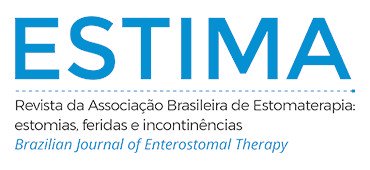KNOWLEDGE, ATTITUDE, AND PRACTICE OF PREGNANT WOMEN ABOUT URINARY INCONTINENCE: OBSERVATIONAL STUDY
Abstract
Objectives: To assess the knowledge, attitude and practice (KAP) of pregnant women about urinary incontinence (UI), identify the prevalence of UI, assess its impact on quality of life (QoL) and identify factors associated with inadequate KAP in relation to UI. Methodology: Observational study carried out from May to November 2019 in the city of Fortaleza, Ceará, Brazil. Two instruments were used for data collection: one for sociodemographic, obstetric and urinary loss assessment and another for KAP assessment on UI. Results: 237 pregnant women participated. The prevalence of UI was 49.3% and a low impact on QoL was observed. Most had knowledge (89.6%) and inadequate practice both to prevent (89.2%) and to treat (78.8%). Low percentages of correct answers were identified related to knowledge about risk factors (46.8%), prevention (43.8%) and treatment of UI (42.8%). Despite this, the attitude was considered adequate for most women (98.5%). Absence of guidance on preparation of the
perineum for childbirth during prenatal care (p = 0.019), low education (p < 0.001), milder cases of UI (p = 0.027) and high-risk pregnancy (p = 0.004) were associated with inappropriate practice. Conclusions: knowledge about the causes, prevention and treatment of UI is insufficient and interferes with the management of this condition.
Downloads
Metrics
References
Abrams P, Cardozo L, Wagg A, Wein A (Eds). Incontinence. 6th edition. Bristol: International Continence Society; 2017.
Moossdorff-Steinhauser HFA, Berghmans BCM, Spaanderman MEA, Bols EMJ. Prevalence, incidence and bothersomeness of urinary incontinence in pregnancy: A systematic review and meta-analysis. Int Urogynecol J 2021;32(7):1633-52. https://doi.org/10.1007/s00192-020-04636-3
Saboia DM, Firmiano MLV, Bezerra KC, Vasconcelos Neto JA, Oriá MOB, Vasconcelos CTM. Impacto dos tipos de incontinência urinária na qualidade de vida de mulheres. Rev Esc Enferm USP 2017;51:e03266. https://doi.org/10.1590/s1980-220x2016032603266
Liang CC, Chao M, Chang SD, Chiu SYH. Impact of prepregnancy body mass index on pregnancy outcomes, incidence of urinary incontinence and quality of life during pregnancy - An observational cohort study. Biomed J 2020;43(6):476-83. https://doi.org/10.1016/j.bj.2019.11.001
Burgio KL, Zyczynski H, Locher JL, Richter HE, Redden DT, Wright KC. Urinary incontinence in the 12-month postpartum period. Obstet Gynecol 2003;102(6):1291-8. https://doi.org/10.1016/j.obstetgynecol.2003.09.013
Sievert KD, Amend B, Toomey PA, Robinson D, Milsom I, Koelbl H, et al. Can we prevent incontinence?: ICI-RS 2011 Karl-Dietrich. Neurourol Urodyn 2012;31:390-9. https://doi.org/10.1002/nau.22225
Abrams P, Smith AP, Cotterill N. The impact of urinary incontinence on health-related quality of life (HRQoL) in a real-world population of women aged 45-60 years: Results from a survey in France, Germany, the UK and the USA. BJU Int 2015;115(1):143-52. https://doi.org/10.1111/bju.12852
Perera J, Kirthinanda DS, Wijeratne S, Wickramarachchi TK. Descriptive cross sectional study on prevalence, perceptions, predisposing factors and health seeking behaviour of women with stress urinary incontinence. BMC Women’s Health 2014;14:78. https://doi.org/10.1186/1472-6874-14-78
Vasconcelos CTM, Firmiano MLV, Oriá MOB, Vasconcelos Neto JA, Saboia DM, Bezerra LRPS. Women’s knowledge, attitude and practice related to urinary incontinence: systematic review. Int Urogynecol J 2019;30(2):171-80. https://doi.org/10.1007/s00192-018-3759-3
Malta M, Cardoso LO, Bastos FI, Magnanini MMF, Silva CMFP. STROBE initiative: guidelines on reporting observational studies. Rev Saúde Pública 2010;44(3):559-65. https://doi.org/10.1590/S0034-89102010000300021
Tamanini JTN, Dambros M, D’Ancona CAL, Palma PCR, Rodrigues Netto Jr N. Validação para o português do “International Consultation on Incontinence Questionnaire - Short Form” (ICIQ-SF). Rev Saúde Pública 2004;38(3):438-44. https://doi.org/10.1590/S0034-89102004000300015
Ribeiro GL, Firmiano MLV, Vasconcelos CTM, Saboia DM, Lopes MHBM, Vasconcelos Neto JA. Scale of pregnant women’s assessment of knowledge , attitude and practice related to urinary incontinence. Int Urogynecol J 2021;33(6):1503-9. https://doi.org/10.1007/s00192-021-04837-4
Martínez Franco E, Parés D, Lorente Colomé N, Méndez Paredes JR, Amat Tardiu L. Urinary incontinence during pregnancy. Is there a difference between first and third trimester? Eur J Obstet Gynecol Reprod Biol 2014;182:86-90. https://doi.org/10.1016/j.ejogrb.2014.08.035
MacArthur C, Wilson D, Herbison P, Lancashire RJ, Hagen S, Toozs-Hobson P, et al. Urinary incontinence persisting after childbirth: Extent, delivery history, and effects in a 12-year longitudinal cohort study. BJOG 2016;123(6):1022-9. https://doi.org/10.1111/1471-0528.13395
Abdullah B, Ayub SH, Mohd Zahid AZ, Noorneza AR, Isa MR, Ng PY. Urinary incontinence in primigravida: The neglected pregnancy predicament. Eur J Obstet Gynecol Reprod Biol 2016;198:110-5. https://doi.org/10.1016/j.ejogrb.2016.01.006
Cardoso AMB, Lima CROP, Ferreira CWS. Prevalence of urinary incontinence in high-impact sports athletes and their association with knowledge, attitude and practice about this dysfunction. Eur J Sport Sci 2018;18(10):1405-12. https://doi.org/10.1080/17461391.2018.1496146
Ojengbede OA, Morhason-Bello IO, Adedokun BO, Okonkwo NS, Kolade CO. Prevalence and the associated trigger factors of urinary incontinence among 5000 black women in sub-Saharan Africa: Findings from a community survey. BJU Int 2011;107(11):1793-800. https://doi.org/10.1111/j.1464-410X.2010.09758.x
Chen CCG, Cox JT, Yuan C, Thomaier L, Dutta S. Knowledge of pelvic floor disorders in women seeking primary care: A cross- sectional study. BMC Fam Pract 2019;20(1):70. https://doi.org/10.1186/s12875-019-0958-z
Mclennan MT, Melick CF, Alten B, Young J, Hoehn MR. Patients’ knowledge of potential pelvic floor changes associated with pregnancy and delivery. Int Urogynecol J 2005;17:22-6. https://doi.org/10.1007/s00192-005-1325-2
Melville JL, Wagner LE, Fan M-Y, Katon WJ, Newton KM. Women’s perceptions about the etiology of urinary incontinence. J Women’s Heal 2008;17(7):1093-8. https://doi.org/10.1089/jwh.2007.0606
Lopes DBM, Praça NS. Incontinência urinária autorreferida no pós-parto: Características clínicas. Rev Esc Enferm USP 2012;46(3):559-64. https://doi.org/10.1590/S0080-62342012000300005
Mandimika CL, Murk W, McPencow AM, Lake A, Wedderburn T, Collier CH, et al. Knowledge of pelvic floor disorders in a population of community-dwelling women. Am J Obstet Gynecol 2014;210(2):165.e1-9. https://doi.org/10.1016/j.ajog.2013.10.011
Downloads
Published
How to Cite
Issue
Section
License
Copyright (c) 2023 Gabriela Lima Ribeiro, Mariana Luisa Veras Firmiano, Camila Teixeira Moreira Vasconcelos, José Ananias Vasconcelos Neto, Maria Helena Baena de Moraes Lopes, Ana Kelve de Castro Damasceno

This work is licensed under a Creative Commons Attribution 4.0 International License.

























